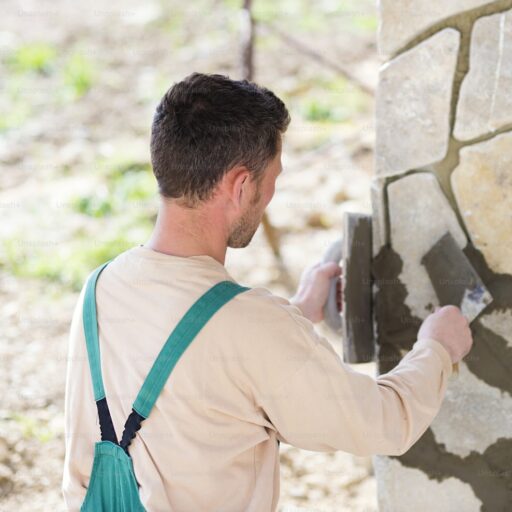Introduction to Sandstone Veneer in Modern Design
In the realm of modern architecture, materials that blend aesthetic appeal with functionality are highly sought after. Sandstone veneer stands out as a prime choice, offering a natural look that complements contemporary designs. Its adaptability and range of benefits make it a favorite among architects and designers aiming to create structures that are both beautiful and enduring.
1. Elevating Aesthetic Appeal with Natural Texture
Harmonizing with Modern Materials
Sandstone veneer brings a unique texture that harmonizes effortlessly with materials like glass, steel, and concrete. This combination creates a balanced visual appeal, adding warmth and character to modern structures.
Creating Visual Interest through Texture
The natural variations in sandstone provide depth and intrigue to architectural designs. Whether used on facades or interior walls, the texture of sandstone veneer adds a tactile dimension that enhances the overall aesthetic.
2. Versatility in Design Applications
Interior and Exterior Flexibility
One of the standout features of sandstone veneer is its versatility. It can be applied to both interior and exterior surfaces, making it suitable for a wide range of design applications. From accent walls in living rooms to exterior cladding on buildings, sandstone veneer adapts to various design needs.
Complementing Various Architectural Styles
Sandstone veneer is not limited to a single architectural style. Its natural appearance makes it suitable for both traditional and modern designs, allowing for creative freedom in architectural expression.
3. Enhancing Energy Efficiency
Thermal Insulation Properties
Sandstone veneer contributes to the energy efficiency of buildings by providing an additional layer of insulation. This helps in maintaining indoor temperatures, reducing the need for excessive heating or cooling.
Sustainable Building Practices
Using sandstone veneer aligns with sustainable building practices. Its natural composition and durability mean that structures require less maintenance and fewer resources over time, contributing to environmental conservation.

4. Durability and Low Maintenance
Weather Resistance
Sandstone veneer is known for its resilience against various weather conditions. It withstands rain, wind, and sun exposure, maintaining its appearance and structural integrity over time.
Longevity of Material
The durability of sandstone veneer ensures that buildings retain their aesthetic appeal for years. Its resistance to wear and tear makes it a cost-effective choice for long-term architectural projects.
5. Cost-Effective Luxury
Affordable Alternative to Solid Stone
While solid stone can be expensive and heavy, sandstone veneer offers a more affordable and lightweight alternative without compromising on the luxurious appearance of natural stone.
Value Addition to Properties
Incorporating sandstone veneer into building designs can enhance property value. Its aesthetic appeal and durability make properties more attractive to potential buyers or tenants.
6. Customization and Personalization
Variety of Colors and Textures
Sandstone veneer is available in a range of colors and textures, allowing architects to select options that best fit their design vision. This variety enables the creation of unique and personalized architectural features.
Tailored Designs for Unique Projects
The adaptability of sandstone veneer means it can be tailored to fit specific design requirements. Whether aiming for a rustic charm or a sleek modern look, sandstone veneer can be customized to achieve the desired effect.
7. Seamless Integration with Modern Technology
Compatibility with Smart Home Features
Modern buildings often incorporate smart technologies. Sandstone veneer can be integrated seamlessly with these features, ensuring that the aesthetic appeal of natural stone does not interfere with technological advancements.
Enhancing Modern Architectural Innovations
As architecture evolves, materials like sandstone veneer play a crucial role in supporting innovative designs. Its flexibility and compatibility with new construction methods make it a valuable asset in modern architecture.
Conclusion
Sandstone veneer offers a multitude of benefits that enhance modern architecture. Its aesthetic versatility, durability, energy efficiency, and adaptability make it an ideal choice for contemporary building designs. By integrating sandstone veneer, architects can create structures that are not only visually appealing but also sustainable and functional.
FAQs
Q1: Is sandstone veneer suitable for both interior and exterior applications?
Yes, sandstone veneer is versatile and can be used for both interior and exterior surfaces, providing a cohesive look throughout the property.
Q2: How does sandstone veneer contribute to energy efficiency?
Sandstone veneer adds an extra layer of insulation to buildings, helping to maintain indoor temperatures and reduce energy consumption.
Q3: Can sandstone veneer be customized to match specific design requirements?
Absolutely. Sandstone veneer comes in various colors and textures, allowing for customization to fit unique architectural designs.
Q4: Is sandstone veneer a durable material for building exteriors?
Yes, sandstone veneer is known for its durability and resistance to weather conditions, making it suitable for exterior applications.
Q5: How does sandstone veneer compare to solid stone in terms of cost?
Sandstone veneer is a more cost-effective alternative to solid stone, offering similar aesthetic benefits without the higher price tag.
Q6: Does sandstone veneer require special maintenance?
Sandstone veneer is low maintenance, requiring only periodic cleaning to maintain its appearance.
Q7: Can sandstone veneer be integrated with modern smart home technologies?
Yes, sandstone veneer can be seamlessly integrated with modern technologies, ensuring that aesthetic and functional aspects of the building work together harmoniously.
For more information on sandstone veneer and its applications in modern architecture, visit Southern Stoneworks LLC.

